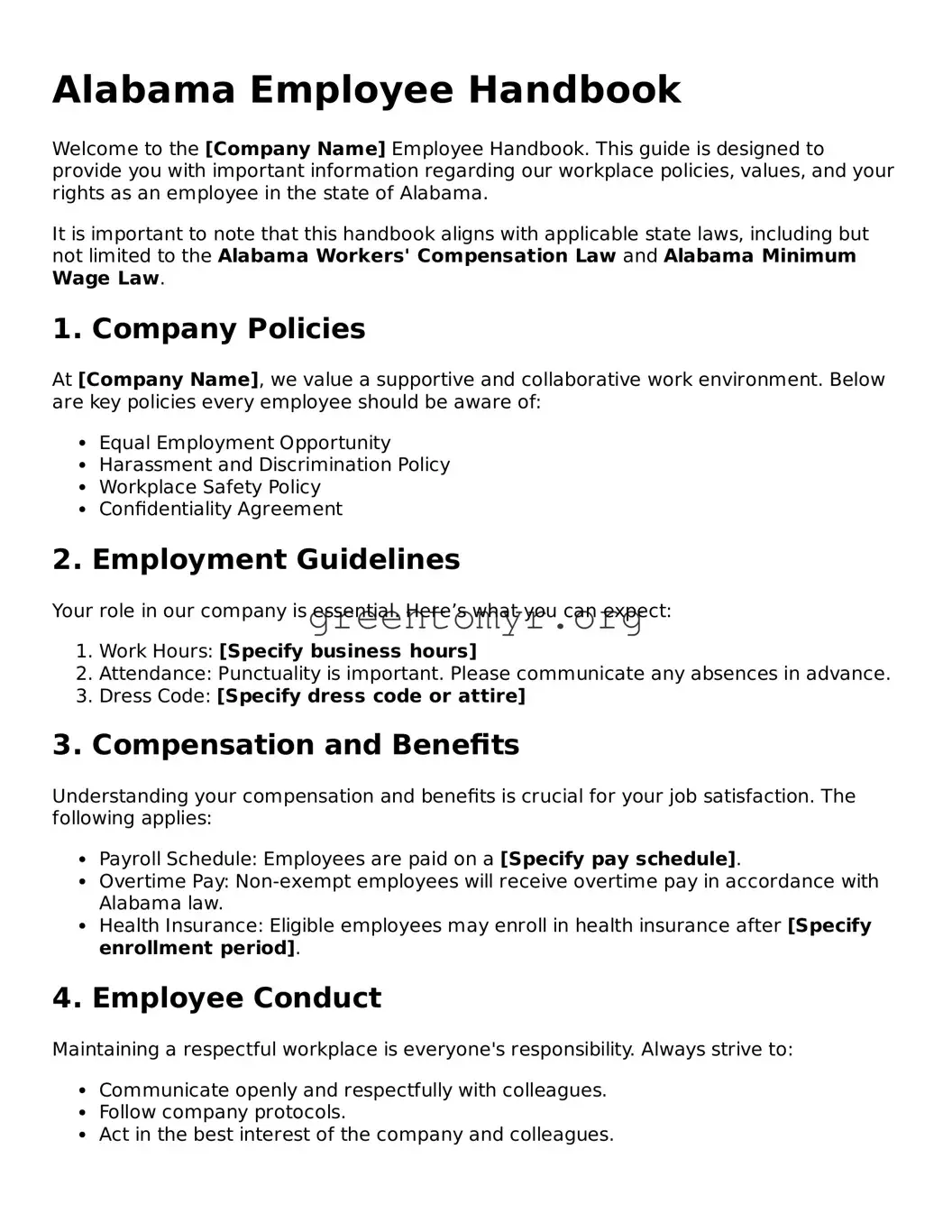The Alabama Employee Handbook form is a document that outlines a company's policies, procedures, and expectations for its employees in the state of Alabama. This handbook serves as a guide for employees and helps establish a clear understanding of workplace standards and employee rights.
Who needs an employee handbook?
All employers in Alabama, regardless of the size of their business, can benefit from having an employee handbook. It provides essential information for both management and staff, ensuring everyone understands company policies. This document is especially important for organizations seeking to maintain compliance with state and federal regulations.
What should be included in the Alabama Employee Handbook?
An effective employee handbook should cover various topics, including:
-
Company mission and values
-
Employment policies (hiring, termination, discrimination)
-
Workplace conduct and behavior expectations
-
Leave and attendance policies
-
Compensation and benefits
-
Health and safety measures
-
Disciplinary procedures
-
Grievance procedures
Including these sections can help ensure clarity and reduce misunderstandings in the workplace.
Is it necessary to have an employee handbook in Alabama?
While it is not legally required in Alabama to have an employee handbook, it is highly recommended. A handbook can protect both employers and employees by providing guidelines that help prevent disputes and clarify workplace policies. Using a handbook as a resource can facilitate better communication within the organization.
The Alabama Employee Handbook form is typically tailored to fit a specific organization's policies. Employers can fill out this form to create a comprehensive handbook that outlines their individual practices. After completion, it should be distributed to employees, ideally during onboarding. Regular updates may be necessary to reflect changes in policies or state laws.
Can an employee handbook be modified?
Yes, employee handbooks can and should be modified as needed. Businesses change, and so can their policies. It's essential to regularly review the handbook to ensure it aligns with current laws and practices. Any updates or changes should be clearly communicated to all employees.
Do employees have to sign the handbook?
It is advised that employees acknowledge receipt of the employee handbook, usually by signing a form. This helps verify they have received the handbook and understand its contents. While signing does not constitute an agreement to the terms, it confirms awareness of company policies.
How does an employee handbook protect the employer?
An employee handbook can protect employers by clearly outlining expectations and procedures. It provides documentation that can support decisions related to discipline or termination if an employee fails to adhere to established policies. Moreover, having clearly stated policies helps reduce the risk of legal issues related to misunderstandings or disputes.
What if an employee violates a policy in the handbook?
If an employee violates a policy outlined in the handbook, the employer should follow the disciplinary procedures specified in the document. It is important to address violations consistently and fairly. Depending on the severity of the violation, disciplinary actions may range from warnings to termination.
The Alabama Employee Handbook form can often be obtained from various sources, including legal websites that provide templates, human resource organizations, or employment law firms. Additionally, custom handbooks can be created by working with legal professionals who specialize in employment law to ensure compliance with state and federal requirements.
